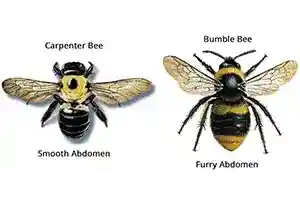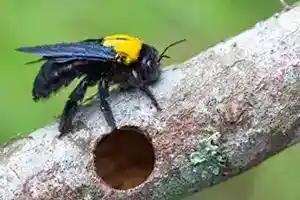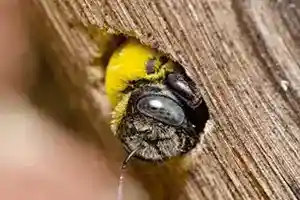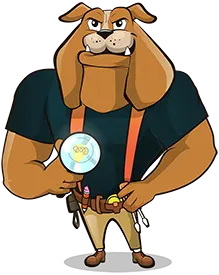Kansas City Termites & Wood Pests: A Homeowner’s Guide [2025]
These are known as wood-destroying insects. Or WDI.
And in Kansas City, houses and termites go together like any other bad relationship – you can always expect at least a little damage and disappointment to come out of it.
So along with the home inspection, radon test, and sewer scope, the termite inspection (technically the Wood-Destroying Insect or WDI) rounds out the 4 most important inspections every homebuyer should always consider.
Kansas City has a few different types of havoc-wreaking, wood-destroying insects that eat, burrow, and live in and around our homes.
The most common is the subterranean termite, but there is also the carpenter ant and the carpenter bee.
These are the Big 3. In fact, it’s not really a matter of IF one of them pays you a visit, but WHEN.
Let’s talk about them…
Kansas City Termites
These saw-toothed, soft-bodied, subterranean busy-buggers nest underground and stay active year-round by traveling through shelter tubes (aka mud tubes). They cannot survive for long outside a damp, moist environment, eat wood 24/7, 365 days a year, and their favorite meal is soft, damp wood.
Signs of Subterranean Termite Activity
Subterranean termites build thin mud tubes, also known as shelter tubes, made of soil, wood, excrement, and saliva. These tubes protect termites from harm and create a moist environment that lets them move between their nest and food (aka your house).
Also, look for hollowed-out wood. Termites eat wood from the inside out, which leaves a thin shell that can look frayed, splintered, and full of mud.
You’ll find this at floor joists, rim joists, subfloors, baseboards, floor boards, along walls, and inside door frames.
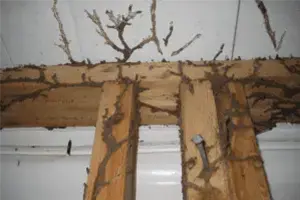
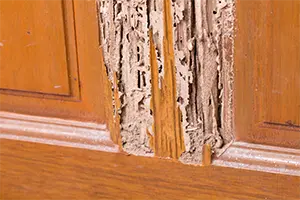
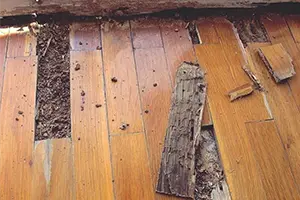
What Subterranean Termites Look Like
There are 3 different types, and they all live together. If you see any of them, you have an infestation and you need to call a professional to stop them from chewing on your stuff.
Workers: About 1/4″ and cream-colored
Soldiers: Large pincers and darker color
Reproductives (swarmers): 1/4″ to 1/2″ body with 2 sets of long wings
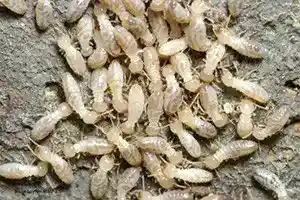
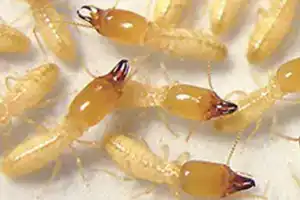
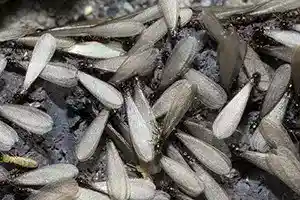
Kansas City Carpenter Ants
Carpenter ants prefer moist, decaying wood and love hollow trees, stumps, and logs. They’ll also invade homes and buildings, especially where there is damp wood.
Unlike termites, carpenter ants don’t eat wood; they burrow through it to build their nests. Over time, this excavating behavior will cause the same degree of damage as termites.
Signs of Carpenter Ant Activity
Sawdust in places it doesn’t belong. Except it won’t be clean. It will be littered with excrement, body parts, and dirt. You’ll also hear rustling sounds inside walls and see big black ants crawling around the area.
What Carpenter Ants Look Like
Large ants. Usually black, but some types are reddish or yellowish color. And you can expect to see two different sizes: the major worker is very large, and the minor worker looks just like the major worker but much smaller. They’ll range from 1/4 to 1/2 inch long.
Major worker: About 1/2″ and cream-colored
Minor worker: Identical to major worker but about 1/4″ long
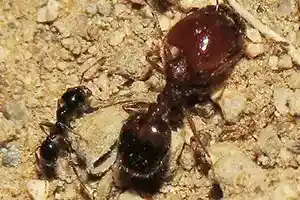

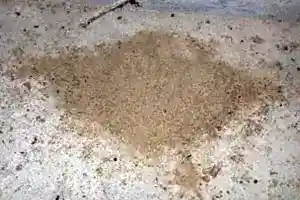
Kansas City Carpenter Bees
This least common culprit is also the least destructive but no less annoying because they look like bumblebees (except these buzzing bandits drill holes in your wood).
What They Look Like
Hairy top and smooth bottom (don’t laugh, it’s true). That’s the easiest way to tell the difference between them and a bumblebee.
Females have stingers, but males don’t.
